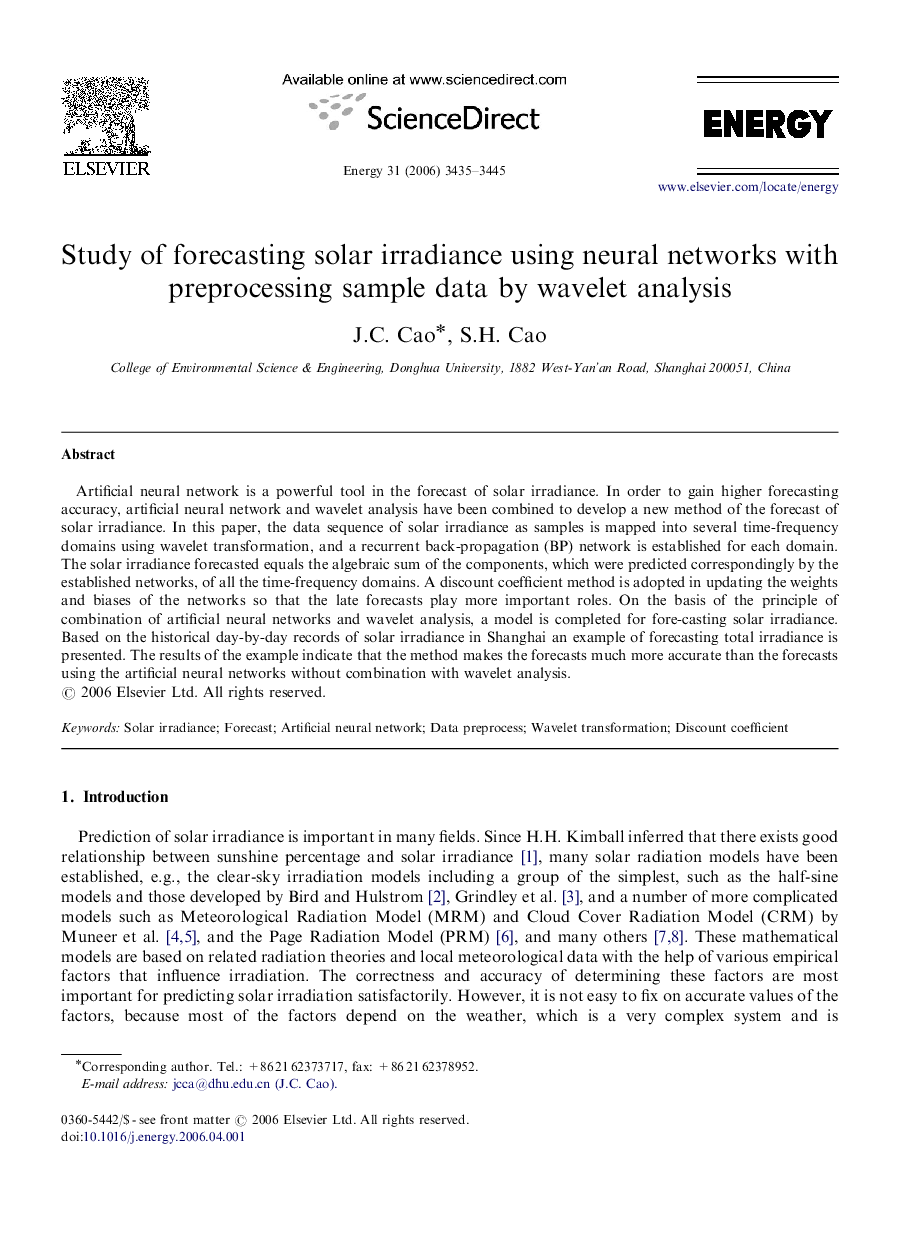| Article ID | Journal | Published Year | Pages | File Type |
|---|---|---|---|---|
| 1736112 | Energy | 2006 | 11 Pages |
Artificial neural network is a powerful tool in the forecast of solar irradiance. In order to gain higher forecasting accuracy, artificial neural network and wavelet analysis have been combined to develop a new method of the forecast of solar irradiance. In this paper, the data sequence of solar irradiance as samples is mapped into several time-frequency domains using wavelet transformation, and a recurrent back-propagation (BP) network is established for each domain. The solar irradiance forecasted equals the algebraic sum of the components, which were predicted correspondingly by the established networks, of all the time-frequency domains. A discount coefficient method is adopted in updating the weights and biases of the networks so that the late forecasts play more important roles. On the basis of the principle of combination of artificial neural networks and wavelet analysis, a model is completed for fore-casting solar irradiance. Based on the historical day-by-day records of solar irradiance in Shanghai an example of forecasting total irradiance is presented. The results of the example indicate that the method makes the forecasts much more accurate than the forecasts using the artificial neural networks without combination with wavelet analysis.
